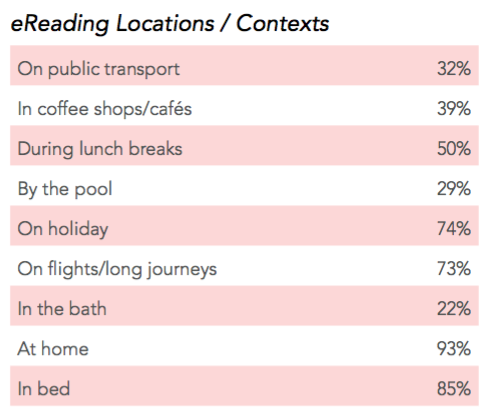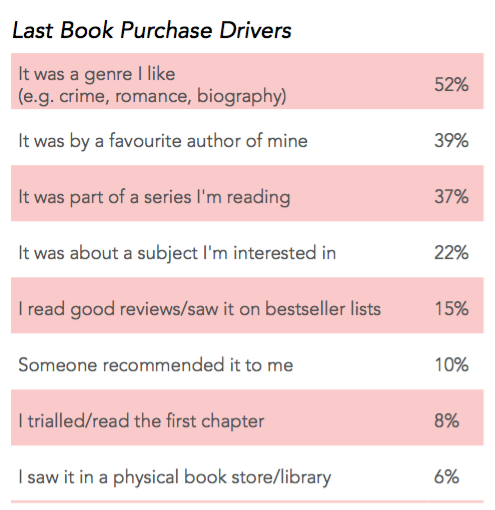Ebook retailer and ereader device vendor Kobo recently published a survey that confirms many assumptions we have had about people who read ebooks. Who are they? Young or old? Men or women? The Kobo survey tells us that the typical ereader/ebook user is a middle aged, or older, woman who is a voracious reader. That’s exactly the same group of people who is buying and reading the most printed books.
According to the Kobo ebook reader survey, 75% of the most avid readers are women (ed. note: occasional ebook readers is likely to be a larger, more diverse group of people). Out of these active readers, 77% are 45 years of age or older. The largest single group (30%) being 55 to 64 years. In the age group 65+, men represent 34% of the most avid readers.
Kobo is able to collect plenty of information on their customers’ buying and reading habits because the company has an online bookstore, it markets ereaders and provides reading applications for computers and mobile devices. When we buy products from any online store, the stores are able to capture many pieces of data about us – not only the compulsory fields that everyone has to fill in. In addition, companies that provide reading apps and connected devices tend to track our reading behavior in the background as we read, underline and possibly comment a book.
Kobo also asked a market research company to survey their customers. The combined results are published in the White Paper “How the Best Readers in the World Read”. Here are a few highlights from the paper.

Where ebook readers like to enjoy their books?
By a clear margin, the most common places to read are home and while traveling. It makes so much sense to pack a tablet or an ereader with a stack of digital books into a travel electronics kit. No more carrying heavy printed books in a bag to the other side of the world.

What was the key factor for the decision for the last book purchase?
It is remarkable how little impact recommendations by friends, critics, or online sources have on purchase decision according to the Kobo survey. Four key factors were:
1. Genre
2. Author
3. Series
4. Subject
Kobo also reports that since the beginning of 2016, they have seen a 60% increase in sales on titles generated through data-driven recommendations and related-reading suggestions. The retailer has simply improved its algorithms that provide book recommendations to customers. This must be the reason why Amazon has – for as long as we can remember – been keen to display recommended products on every page you visit. Many times, Amazon’s recommendations actually are very much to the point.
What does all this mean to the future of ebooks and ereaders?
First, the survey results largely explain why ebooks so far have been replicas of printed books. People who like the look of printed books want ebooks that look roughly the same. That’s what the industry has given to readers in simply laid out EPUB and Kindle titles.
Second, the survey results explains why ebooks have not yet developed beyond the look and possibilities of printed books. Middle aged and older readers are not necessarily interested in new features, like interactivity in books. Younger generations could be interested in new features that might attract them to read more, but they are not buying books as much as older generations. Middle-aged people are buying and, to a large degree, financing the industry.
As movies and music have gone digital, the products have changed, or they are under a long change development phase. Movies have adopted effects and animated characters that were not possible in the analog era. Music industry has changed focus from albums to singles as streaming and video services have become popular. Live performances are more important for artists’ livelihood than earlier.
The book trade hasn’t yet experienced major shifts like many other media industries already have gone through. It is not an option that everything stays the same in the book industry when products go digital. Things will change. Who knows how and when?

